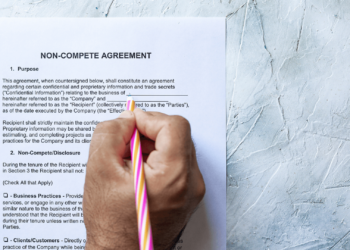On May 18, 2023, the United States Supreme Court decided Amgen Inc et al.. Sanofi et al., a case on patents covering antibodies engineered by scientists that help reduce levels of low-density lipoprotein cholesterol. While the technology at issue was new, the Court relied on its precedent dating back nearly 170 years ago to unanimously hold that the Amgen’s patents on the cholesterol drug Repatha were invalid as they covered any antibody that could bind to a certain protein. As a result, the patents did not enable a skilled person to make and use Amgen’s claimed invention and thus amounted “to little more than two research assignments.”
THE CASE:
Amgen obtained a patent in 2011 for an antibody used in a drug to reduce LDL cholesterol. Sanofi also received a patent for a similar antibody. The dispute between the parties concerned two additional patents Amgen obtained in 2014 which claim the “entire genus” of antibodies that bind to specific amino acid residues on PCSK9 and block it from binding to LDL receptor.
Amgen developed two methods for generating additional antibodies that performed the binding and blocking functions described in its claims. Amgen identified the amino acid sequences of 26 antibodies that bind to PCSK9 and block it from binding to LDL receptors.
Sanofi argued that Amgen’s claims were invalid under the Patent Act’s “enablement” requirement (which requires a patent application to describe the invention in a way that allows others to make and use it) because there might be millions of undisclosed antibodies that perform the same functions as those claimed in Amgen’s patents. Sanofi further asserted that Amgen’s methods for generating additional antibodies amounted to trial-and-error and that the patents claim more antibodies than Amgen had taught others to make.
The District Court and Federal Court both sided with Sanofi.
SUPREME COURT PRECEDENT:
Under the Patent Act, specifically sections 111 and 112, a patent application must include a specification that enables a person skilled in the art to make and use the invention. The Supreme Court has addressed the enablement requirement on many prior occasions addressing well-known technologies.
In O’Reilly v. Morse, 15 How. 62 (1854), a case concerning the telegraph, Morse sued O’Reilly for infringement. Morse’s patent included eight claims, seven of them which were upheld by the Court. But the eighth claim, which covered “the essence” of the invention, was held “too broad” because it covered all means of achieving telegraphic communication, yet Morse had not described how to make and use them all.
Similarly, the Incandescent Lamp case, the dispute between Thomas Edison on the one hand and William Sawyer and Albon Man on the other, involved the patents for an “electric lamp”. The Court rejected the claim of infringement because Sawyer’s and Man’s patents “claimed much but enabled little”. Edison came to his product through “painstaking experimentation” and not because of a quality common to fibrous and textile substances identified by Sawyer and Man.
The Perkins Glue Company fared no better in the Holland Furniture Co. v. Perkins Glue Co. case because Perkin’s patent was invalid for lack of enablement. That case dealt with Perkin’s substitute for animal glue, which it was entitled to a patent for that particular starch glue, but not for all starch glues made from whatever starch happened to perform as well as animal glue.
HOLDING:
The prior decisions illuminated the principle that even cutting-edge biotechnology inventions must meet the same requirements of the past 150-plus years: patents must enable a skilled person to make and use the full scope of the invention. “If an inventor claims a lot, but enables only a little, the public does not receive its benefit of the bargain”, which is exactly what Amgen failed to do. And while a reasonable amount of experimentation to make and use a patented invention will not doom a patent, requiring others to engage in research assignments will not hold. Thus, broad patents, here Amgen’s, cannot cover anything that can perform a certain function.
THE TAKEAWAY:
The Justices did not create new law but applied the enablement requirement the Court has used in decisions dating back to the 19th century. Even cutting-edge technology must meet the same requirements used to examine the inventions of the telegraph and the light bulb. Moving forward, patent applications will need to ensure that they provide sufficient detail to meet the enablement requirement. Failure to do so will likely result in the infringement case failing to see any light.







